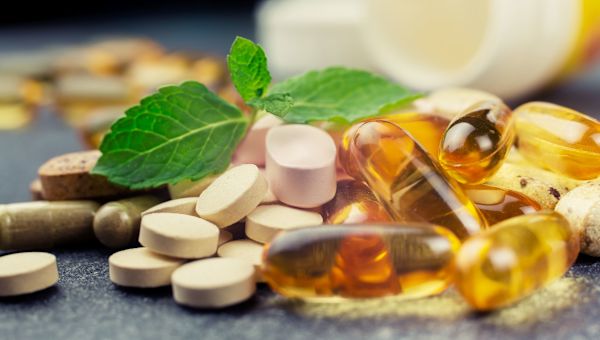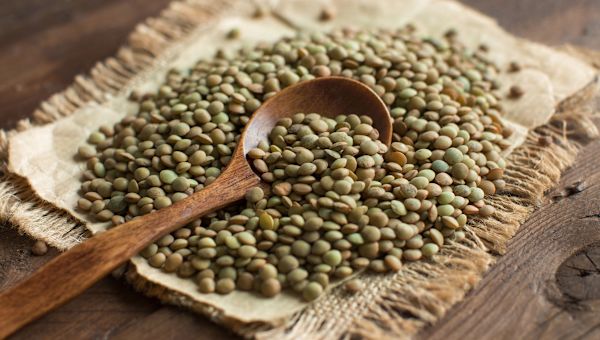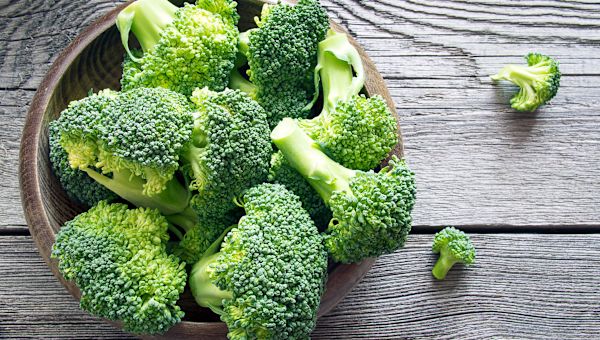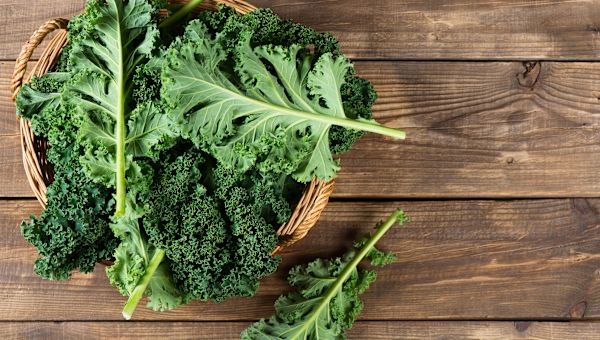8 foods that can help replace your multivitamin
Your best bet for getting the vitamins you need may be the produce aisle.
Updated on September 26, 2025

About one-third of adults in the United States take a multivitamin. These supplements typically contain a blend of vitamins and minerals like vitamins A, C, and K, calcium, iron, and folic acid, among others. In 2020, U.S. sales of multivitamins reached $8 billion.
Proponents claim that multivitamins help ward off disease and protect your heart. But in 2022, the U.S. Preventive Services Task Force (USPSTF) concluded that there was not enough evidence to recommend the routine use of multivitamins to prevent either heart disease or cancer, the two leading causes of death in the United States.
So why are we still taking them in such huge numbers? Some people, including those who follow a vegan diet and those with medical conditions that prevent proper nutrient absorption—like inflammatory bowel disease (IBD)—rely on multivitamins to get the nutrients their diets don’t provide. If you’re at risk for vitamin deficiency, your healthcare provider (HCP) can advise you on ways to get what your body needs.
Most of us, however, can get the daily recommended amounts of most vitamins and minerals from food alone. If you’re looking to increase your intake without popping a multivitamin, consider adding these nutrient-rich foods to those you may already be eating.

Vitamin A: sweet potatoes
These orange spuds are packed with immune-supporting vitamin A. This fat-soluble vitamin comes in two forms:
- Preformed is found in animal products like fish and milk.
- Provitamin A is abundant in fruits and veggies like carrots and kale. When we consume provitamins like beta-carotene, the body converts the compounds into vitamin A.
Each type of the vitamin is absorbed differently, but the total amount needed is expressed in RAEs, or retinol activity equivalents. On average, men should aim for about 900 micrograms (mcg) RAE of vitamin A, while women need 700 mcg RAE each day. It’s important to note that vitamin A deficiency is rare in the U.S.
A varied diet that includes sweet potatoes can boost your vitamin A intake. One sweet potato, baked with the skin, provides more than 150 percent of the recommended daily amount of vitamin A. Bake and mash a sweet potato and enjoy with a sprinkle of cinnamon, or dice and roast with a drizzle of olive oil and fresh herbs, like rosemary and thyme.

Iron: lentils
Iron is a mineral essential for the production of hemoglobin, the protein in red blood cells that carries oxygen throughout the body. Without enough iron, you may experience fatigue, weakness, or shortness of breath. Iron deficiency is common worldwide, primarily in developing countries, but toddlers, women of childbearing age, and pregnant people are among those at risk in the U.S. The recommended daily intake for men is 8 mg, but women should aim for about 18 mg. Pregnant people need more still, about 27 mg per day.
Animal sources of iron—such as liver, sardines, beef, and chicken—are among the most common sources of iron in the typical American diet. But you can get a healthy amount from lentils, at just under 6 milligrams (mg) of iron per cooked cup.
To increase your intake, try a lentil Buddha bowl: Toss together lentils, fresh spinach, a serving of your favorite beans, a few cooked shrimp, and your choice of seasonal veggies. To maximize the amount of iron your body can absorb from plant sources of the vitamin, it helps to pair them with foods rich in vitamin C, like citrus, tomatoes, bell peppers, and crunchy greens.

Vitamin C: broccoli
Vitamin C is a powerful antioxidant that helps protect your body from free radical damage. It can also boost collagen production and bolster the immune system. You may think that eating oranges is the best way to get your C, but green vegetables offer healthy amounts, too.
One cup of chopped broccoli contains 69.4 mg—that’s 93 percent of the daily recommended value for women and 77 percent for men. Guidelines suggest that women should consume about 75 mg of the vitamin per day, while men need about 90 mg. Pregnant and breastfeeding people should get more—about 85 mg and 120 mg, respectively.
Severe deficiencies are rare, but some people are at risk of having inadequate levels of vitamin C. Cigarette smoking decreases vitamin levels, so habitual smokers (and people exposed to secondhand smoke) are at a higher risk of deficiency.
Add broccoli to your lunchtime salad, stir it into a bowl of whole-wheat pasta with fresh marinara sauce, or dunk raw florets into healthy, homemade hummus. Strawberries and kiwis also pack a sweet punch of vitamin C.

Vitamin D: salmon
Vitamin D is essential for the health of your whole body. It helps keep bones strong, promotes nerve and muscular function, and boosts the immune system. It’s made naturally by the body when skin is exposed to direct sunlight, and is also found in certain foods, including fish, egg yolks, and in fortified products like milk, orange juice, and breakfast cereals.
Most of the U.S. population gets enough vitamin D, so supplements aren’t a necessity for everyone. But they might be for some. About 1 in every 5 Americans is at risk for inadequate vitamin D, and 1 in 20 is at risk of deficiency. Inadequate levels can affect bone and muscle health. Vitamin D deficiency in children can lead to rickets, a condition marked by soft bones and skeletal problems. In adults it may lead to osteomalacia, which can lead to weakened bones, bone deformities, and pain.
Those most at risk include older adults, breastfed infants, obese individuals, people with dark skin, inactive individuals, and those with conditions that disrupt nutrient absorption, like Crohn’s or celiac disease.
The amount of vitamin D your body can produce depends on the time of day, your location, the color of your skin, and the amount of skin you have exposed. Fairer-skinned people may need just a few minutes of sunlight to get an adequate amount; people with darker skin will need to get more sun exposure to reap the same benefits. Regardless of your complexion, it’s best to wear sunscreen or protective clothing if you plan to spend more than a few minutes in the sun.
Speak with your HCP about the right amount of sun for your skin and the best ways to protect yourself from powerful rays. In the meantime, making fatty fish like salmon a regular part of your diet can not only benefit your brain and heart, it may also help you maintain your vitamin D levels.

Vitamin E: nuts and seeds
Many foods, like asparagus, red bell pepper, and peanut butter are rich with vitamin E, a fat-soluble vitamin with antioxidant properties. Antioxidants are substances that help prevent or delay damage to cells in the body.
Vitamin E deficiencies in the U.S. are very rare, and are typically related to conditions that cause fat to be improperly digested or absorbed by the body, such as Crohn’s disease.
Looking to get the E you need? Make a habit of noshing on nuts and seeds. A 1-ounce serving of sunflower seeds contains over 7 mg of vitamin E, with almonds not far behind at just under 7 mg. Soybean, canola, corn, and other vegetable oils are also rich in vitamin E. In fact, most vitamin E in American diets comes from these sources.
Nuts and seeds are versatile, and a great snack when you’re on the go. Toss a small handful of sunflower seeds into a salad or combine plump blueberries with slivered almonds for a sweet and crunchy snack.

Vitamin K: kale
From crispy chips to fresh juices to crunchy salads, kale is nearly everywhere. And for good reason. This leafy green is loaded with nutrients like vitamins A and C and manganese. Manganese is a mineral that promotes brain and nerve function, aids healthy blood clotting, and may help strengthen bones.
Most notably, kale is packed with vitamin K, about 113 mcg per chopped cup. The daily recommendation is 90 mcg for women and 120 mcg for men.
Vitamin K is found in a variety of foods, like spinach and broccoli, and can help bolster the health of your bones and heart. Give crunchy kale a try as the base of a nutrient-packed salad, blended into your morning smoothie, or slow-cooked into a hearty pot of soup.
A word of caution: Those taking certain medications, namely blood thinners, may need to monitor the amount of vitamin K they consume to keep them at consistent levels. If you’re taking a medication that thins the blood, speak with your HCP about the right diet for you.

Calcium: yogurt
Calcium is an essential mineral for strong teeth and bones. It also helps regulate blood clotting, muscle function, and hormones. Dietary guidelines recommend that adults under the age of 50 consume about 1,000 mg a day.
Starting your day with yogurt is a good way to add some calcium (and protein) to your diet. A 6-ounce serving contains about 300 mg of calcium. Choose plain, nonfat Greek yogurt to reduce fat and calories, and top yours with fresh fruit and unsweetened shredded coconut for a healthy dose of fat, extra vitamins, and a bit of natural sweetness.
Those most at risk for inadequate calcium consumption—which can lead to osteoporosis—include postmenopausal people, vegans, and people with a lactose intolerance. These groups should find ways to add more calcium to their diet. Spinach, salmon, and soybeans are decent sources, but a calcium-rich diet may not be enough for some. Speak with your HCP to find out if you’re at risk for too little calcium and whether adding a supplement may be necessary.

Folate: beans
Black, navy, and kidney beans, among others, are great sources of plant-based protein. They’re also rich in folate, a B vitamin naturally found in certain foods. A cup of cooked black beans contains 244 mcg. Folate is also found in peanuts, Brussels sprouts, and whole grains.
Folate is important for making DNA and other genetic compounds. The daily recommendation for all adults is 400 mcg, so a single cup of beans takes care of more than half of your daily need. Almost anyone can become deficient in folate, but those who consume too much alcohol, have a diet low in fruits and vegetables, or have certain conditions that prevent proper absorption of nutrients (like celiac disease), are at the highest risk.
Women of childbearing age and people who are pregnant or planning to become pregnant should speak with an HCP about increasing daily intake. Your HCP will likely recommend a folic acid supplement and a list of fortified foods to eat.

National Institutes of Health. Multivitamin/mineral Supplements: Fact Sheet for Health Professionals. July 17, 2024.
U.S. Preventive Services Task Force. Final Recommendation Statement: Vitamin and Mineral Supplementation to Prevent CVD and Cancer. June 21, 2022.
Centers for Disease Control and Prevention. Leading Causes of Death. June 26, 2025.
Ghishan FK, Kiela PR. Vitamins and Minerals in Inflammatory Bowel Disease. Gastroenterol Clin North Am. 2017;46(4):797-808.
U.S. Department of Agriculture: FoodData Central. Sweet potato, raw, unprepared. Accessed September 26, 2025.
National Institutes of Health. Vitamin A and Carotenoids: Fact Sheet for Consumers. March 10, 2025.
National Institutes of Health. Vitamin A and Carotenoids: Fact Sheet for Health Professionals. March 10, 2025.
U.S. Department of Agriculture: FoodData Central. Lentils, NFS. Accessed September 26, 2025.
MedlinePlus. Iron in Diet. January 21, 2025.
Mayo Clinic. Symptoms: Low Hemoglobin Count. May 13, 2025.
National Institutes of Health. Iron: Fact Sheet for Health Professionals. September 4, 2025.
Cleveland Clinic. 52 Foods High in Iron. March 15, 2023.
National Institutes of Health. Vitamin C: Fact Sheet for Consumers. March 22, 2021.
U.S. Department of Agriculture: FoodData Central. Broccoli, raw. Accessed September 26, 2025.
National Institutes of Health. Vitamin C: Fact Sheet for Health Professionals. July 31, 2025.
National Institutes of Health. Vitamin D: Fact Sheet for Consumers. November 8, 2022.
National Institutes of Health. Vitamin D: Fact Sheet for Health Professionals. June 27, 2025.
Liu X, Baylin A, et al. Vitamin D deficiency and insufficiency among US adults: prevalence, predictors and clinical implications. Br J Nutr. 2018;119(8):928-936.
Harvard School of Public Health. Vitamin E. February 20, 2025.
National Institutes of Health. Vitamin E: Fact Sheet for Consumers. March 22, 2021.
U.S. Department of Agriculture: FoodData Central. Almonds, NFS. Accessed September 26, 2025.
U.S. Department of Agriculture: FoodData Central. Sunflower seeds, NFS. Accessed September 26, 2025.
National Institutes of Health. Vitamin E: Fact Sheet for Health Professionals. Page last reviewed March 26, 2021.
MedlinePlus. Healthy Food Trends – Kale. Page last reviewed June 22, 2022.
Budinger D, Barral S, et al. The role of manganese dysregulation in neurological disease: emerging evidence. Lancet Neurol. 2021;20(11):956-968.
National Institutes of Health. Manganese: Fact Sheet for Health Professionals. March 29, 2021.
National Institutes of Health. Vitamin K: Fact Sheet for Health Professionals. March 29, 2021.
MedlinePlus. Calcium in Diet. January 21, 2025.
National Institutes of Health. Calcium: Fact Sheet for Health Professionals. July 11, 2025.
U.S. Department of Agriculture: MyPlate. Protein Foods. Accessed September 26, 2025.
U.S. Department of Agriculture: FoodData Central. Black beans, NFS. Accessed September 26, 2025.
National Institutes of Health. Folate: Fact Sheet for Health Professionals. November 30, 2022.
More On


video

article


video


video


video
